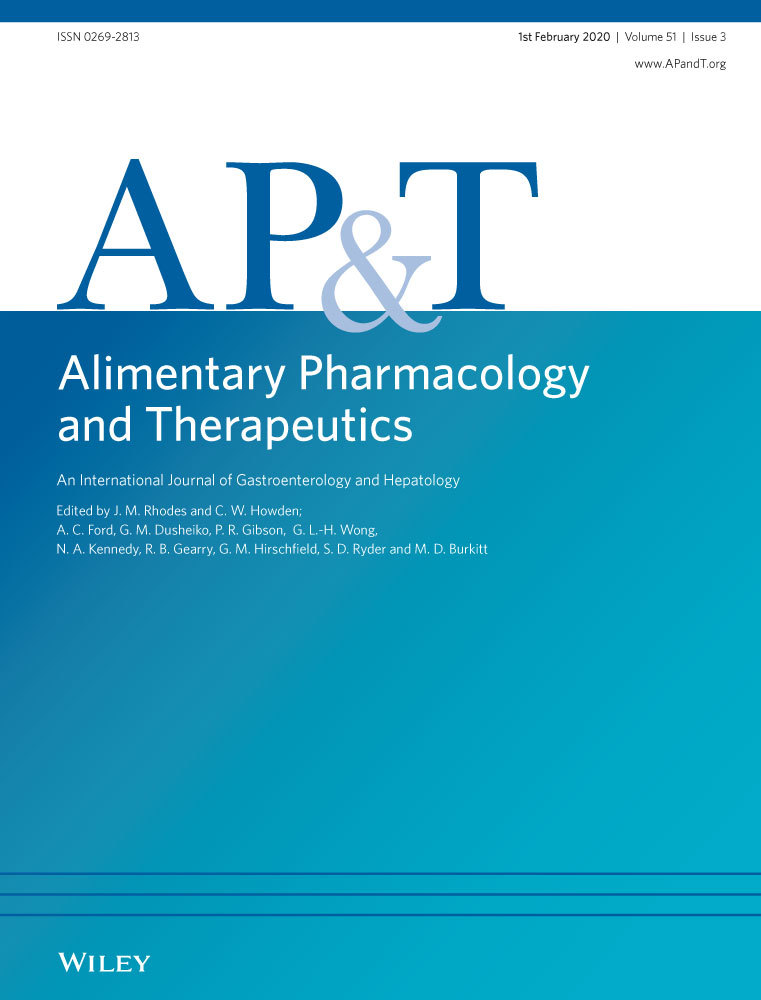Editorial: interventions in infantile colic – can efficacy be attributed to treatment or to time? Authors' reply
Abstract
LINKED CONTENT
This article is linked to Nocerino et al and Iacovou papers. To view these articles, visit https://doi.org/10.1111/apt.15561 and https://doi.org/10.1111/apt.15599.
We thank Dr Iacovou1 for the interest in our paper describing the therapeutic efficacy of Bifidobacterium animalis subsp lactis BB-12 (BB-12) in infantile colic.2 We agree with Dr Iacovou, the age at enrolment is crucial for randomized controlled trials (RCTs) on infantile colic, which usually peaks at around 6 weeks of age with progressive symptoms resolution by 3-6 months of age.3, 4 For these reasons, with the aim to reduce the risk of bias related to the self-limited nature of infantile colic, we planned to evaluate in our 4-week trial only infants aged <7 w. A similar design was adopted by others.5-7 All infants evaluated in our RCT were aged <6 weeks at enrolment, and we observed significant impact of BB-12 on daily crying duration and the number of crying episodes starting from the second week of therapy (before the age of 3 months in all subjects).
Actually, dietary intervention for the lactating mothers has not been included in the management of infantile colic because the intervention could have negative impact on maternal-infant interaction and on the longer term continuation of breastfeeding.8 However, recent data suggest possible benefit deriving from reduced FODMAP content in maternal diet. If confirmed by future studies, this strategy could change that opinion.9 In our study, the possible influence of maternal dietary factors or changes in dietary habits was assessed by analyzing data from 7-day food diary collected at baseline and during the last week of treatment. No dietary changes were observed during the study.
Regarding the diagnosis of infantile colic, it was defined according to the best diagnostic criteria available when the trial was designed (the Rome III Criteria: paroxysms of irritability, fussing or crying that start and stop without obvious cause; with episodes lasting ≥3 hours per day and occurring at least 3 days per week for at least 1 week; and no failure to thrive).10 In Figure S2, we reported just one of the three symptoms that should be considered for the diagnosis of infantile colic and, as described in the text, at baseline the difference between the two study groups was not significant.
Dr Iacovou suggested to use a new score to assess stool pattern, but this method only became available in November 2018 when our RCT was already completed. Moreover, as stated in the text, infants did not take pre/pro/synbiotics, anti-colic medications or supplementation with other nutritious fluids during the study.
In a well-defined study population of colicky infants, we investigated simultaneously clinical outcomes and potential mechanisms of action of a well-characterized probiotic strain. We think that data on the good safety profile of the probiotic strain, impressive clinical results together with modulation of gut inflammation and microbiota structure and function justify the statement of ‘compelling evidence’ for the efficacy of BB-12 in the treatment of infantile colic.
ACKNOWLEDGEMENT
The authors' declarations of personal and financial interests are unchanged from those in the original article.2




